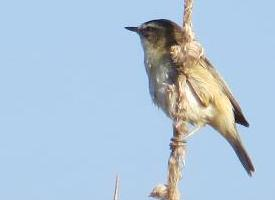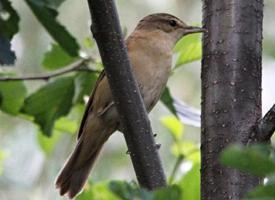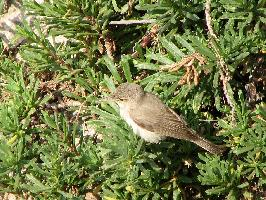
Poids et mesures
| Longueur | de 11,5 à 13 cm |
|---|
Données biologiques
| Durée de vie | 2 r |
|---|
Statut de conservation
| Menacé |
Description de l'animal
The Sedge Warbler (Acrocephalus schoenobaenus) is a small, yet fascinating bird that belongs to the family Acrocephalidae, known for its members' distinctive vocalizations and habitat preferences. This bird species is particularly celebrated for its complex and melodious song, a trait that makes it a subject of interest among birdwatchers and ornithologists alike.Physically, the Sedge Warbler is a compact bird, measuring approximately 12-13 cm in length, with a wingspan that ranges between 17-21 cm. It has a modest weight of about 10-15 grams, which contributes to its agility and nimbleness. The plumage of the Sedge Warbler is primarily brown and buff, featuring a well-camouflaged pattern that blends seamlessly into its preferred reedbed habitats. Notably, its crown and upper parts exhibit a streaky brown appearance, while the underparts are lighter, often a pale buff or white. A distinctive feature of the Sedge Warbler is its conspicuous supercilium or eyebrow stripe, which is creamy white and contrasts with the darker head stripes.
One of the most remarkable aspects of the Sedge Warbler is its vocal prowess. The males are known for their rich and varied song, which includes a mix of melodious notes, trills, and mimicked sounds from other bird species. This vocal display is primarily used during the breeding season, serving both to attract females and to ward off rival males. The song of the Sedge Warbler can be heard both during the day and at night, adding a soundtrack to the marshes and reedbeds they inhabit.
The Sedge Warbler exhibits a preference for wetland habitats, particularly those with dense vegetation such as reeds, rushes, and tall grasses. These environments provide not only the necessary cover from predators but also a rich source of food. The diet of the Sedge Warbler mainly consists of insects and other small invertebrates, which it adeptly gleans from foliage and sometimes catches in flight.
Breeding season for the Sedge Warbler is a time of activity and vibrancy. The bird is a migratory species, with populations breeding across Europe and western and central Asia, and wintering in sub-Saharan Africa. During the breeding season, the female builds a well-concealed nest in dense vegetation, laying between 3-5 eggs. Both parents are involved in raising the young, which fledge about 10-15 days after hatching.
Conservation-wise, the Sedge Warbler is currently classified as Least Concern by the International Union for Conservation of Nature (IUCN), indicating that it is not at immediate risk. However, like many wetland-dependent species, it faces threats from habitat destruction and degradation, particularly due to drainage of wetlands, pollution, and climate change. Conservation efforts aimed at preserving wetland habitats are crucial for the continued survival and prosperity of the Sedge Warbler population.
In summary, the Sedge Warbler is a small, yet intriguing bird species known for its distinctive song and habitat preferences. Its presence enriches the biodiversity of wetland ecosystems, making it an important species for conservation efforts aimed at preserving these vital habitats.
Animaux similaires
Nouvelles photos d'animaux
Top 10 des animaux
- Dolphin gull (Leucophaeus scoresbii)
- Japanese macaque (Macaca fuscata)
- Stone loach (Barbatula barbatula)
- Greek tortoise (Testudo graeca)
- Russian tortoise (Testudo horsfieldii)
- Galápagos tortoise (Geochelone nigra complex)
- Diana monkey (Cercopithecus diana)
- Moustached guenon (Cercopithecus cephus)
- Common flying dragon (Draco volans)
- Galápagos penguin (Spheniscus mendiculus)


